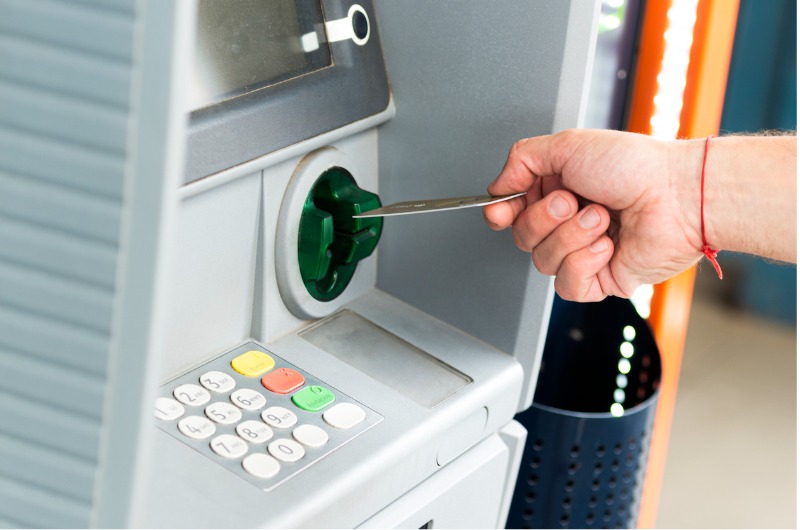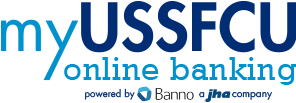How to Spot and Avoid Card Skimmers
Published: May 20, 2024

What Is a Card Skimmer?
Card skimmers are hard-to-spot devices that thieves place over or inside card-reading machines at legitimate retailers to directly copy card and PIN information. They then use the stolen data to make fraudulent purchases or, in the case of debit cards, clean out a victim’s bank account.
Where Can Card Skimmers Be Found?
Skimmers can exist anywhere credit or debit cards can be swiped, including:
- ATMs: These are common targets, especially those located on isolated streets. Criminals have more time to set up hidden cameras or fake keypads to capture your PIN.
- Gas Stations: Skimmers here are particularly risky as thieves can install the devices internally, making them harder to detect.
- POS (Point of Sale) Terminals: Skimmers can be concealed within POS terminals or handheld devices at retail stores or restaurants — possibly even by dishonest staff members.
- Outdoor Vending Machines: Skimmers can be placed over the card reader or inserted into the card slot.
- Self-Checkout Kiosks: These are prime locations for skimmers since they service customers using cards without the oversight of staff members.
- Train or Metro Station Ticket Machines: These high-traffic areas can also attract thieves looking to install skimmers.
How Do Card Skimmers Work?
The black magnetic stripe on the back of a credit or debit card, also known as a magstripe, contains encoded information about the card and its linked account. A credit card skimmer can read the magstripe, giving thieves unbridled access to its data, which includes:
- Cardholder's Name: Essential for identity scams that enable thieves to make fraudulent transactions or create counterfeit cards in your name.
- Card Number: The unique 16-digit number or primary account number (PAN) required to make purchases.
- Expiration Date: This data can be used to create a functional counterfeit card or to dupe customer support staff on scam calls to the card issuer.
- Security Code (CVV/CVC): Before confirming online purchases, thieves will need to enter the three or four-digit security code found on the back of your card.
Some perpetrators also steal PIN codes by installing inconspicuous cameras or using counterfeit overlay number pads that record numbers when people type.
How to Spot and Avoid Skimmers
Visually and physically inspect ATMs and POS machines before using them, avoiding devices that appear loose or tampered with. Here are some signs of skimming devices:
- The keypad feels uneven or soft.
- The machine is dented or looks tampered with.
- Some parts feel loose when you grab and wiggle the device.
- Some parts look out of alignment or detached from the rest.
- Some parts are a different color or style than the rest of the machine.
Check for Security Seals: At gas pumps, look for possible skimming by checking the security seal near the reader. If there’s a broken seal, that’s a sign that there might be a skimmer installed. It's a good idea to move to another gas pump or pay inside and inform an associate.
Utilize Machines in Public View: Preferably use machines monitored by security cameras. Exercise caution when using machines in tourist areas, where skimming incidents are more prevalent.
Look for Hidden Cameras: Hidden cameras might not be as easily identifiable as other skimming products. At the gas pump or ATM, inspect what’s around the card reader. Look closely above it to see if there are any holes looking down on where you would insert your card. There might be a hidden camera capturing you entering your PIN. Keep in mind that ATMs often have security cameras built into them.
Tips to Avoid Being Skimmed
-
Use Mobile Wallet: An alternative to swiping your card is paying by mobile wallet, including Apple Pay, Samsung Pay, or Google Pay. This form of payment is secure because your credit card information is tokenized and rendered useless if a thief were to get hold of it.
-
Pay Inside: If you are at a gas station that doesn't accept mobile wallet or you aren't sure if the machine is safe to use, go inside the service station to pay. Taking an extra minute to walk inside could save you a whole load of problems later on.
-
Only Use ATMs You Trust: Fraudsters tend to target ATMs in secluded areas, as it’s easier for them to remain undetected when installing a credit card skimmer. To avoid having your card skimmed, make sure you use ATMs from trusted financial institutions. Utilize machines in public view, preferably monitored by security cameras.
-
Monitor Your Account Statements Regularly: Frequently monitor your accounts for unauthorized charges, perhaps even reviewing your accounts online daily. Enroll in transaction notifications to receive alerts for every card usage.
Reporting Skimming Incidents
Upon detecting unauthorized transactions or suspecting skimming activity, promptly report the incident to your card issuer or bank. You can do this by calling the number on the back of your card. After reporting any fraud, you may want or need to follow up on the status of your claim.
By staying vigilant and following these tips, you can better protect yourself from the growing threat of card skimmers and keep your financial information secure.
This content is for informational purposes only. Sources: 1Credit card skimmers: How to spot & avoid them 2 What Is a Credit Card Skimmer? How To Spot & Avoid Skimming



